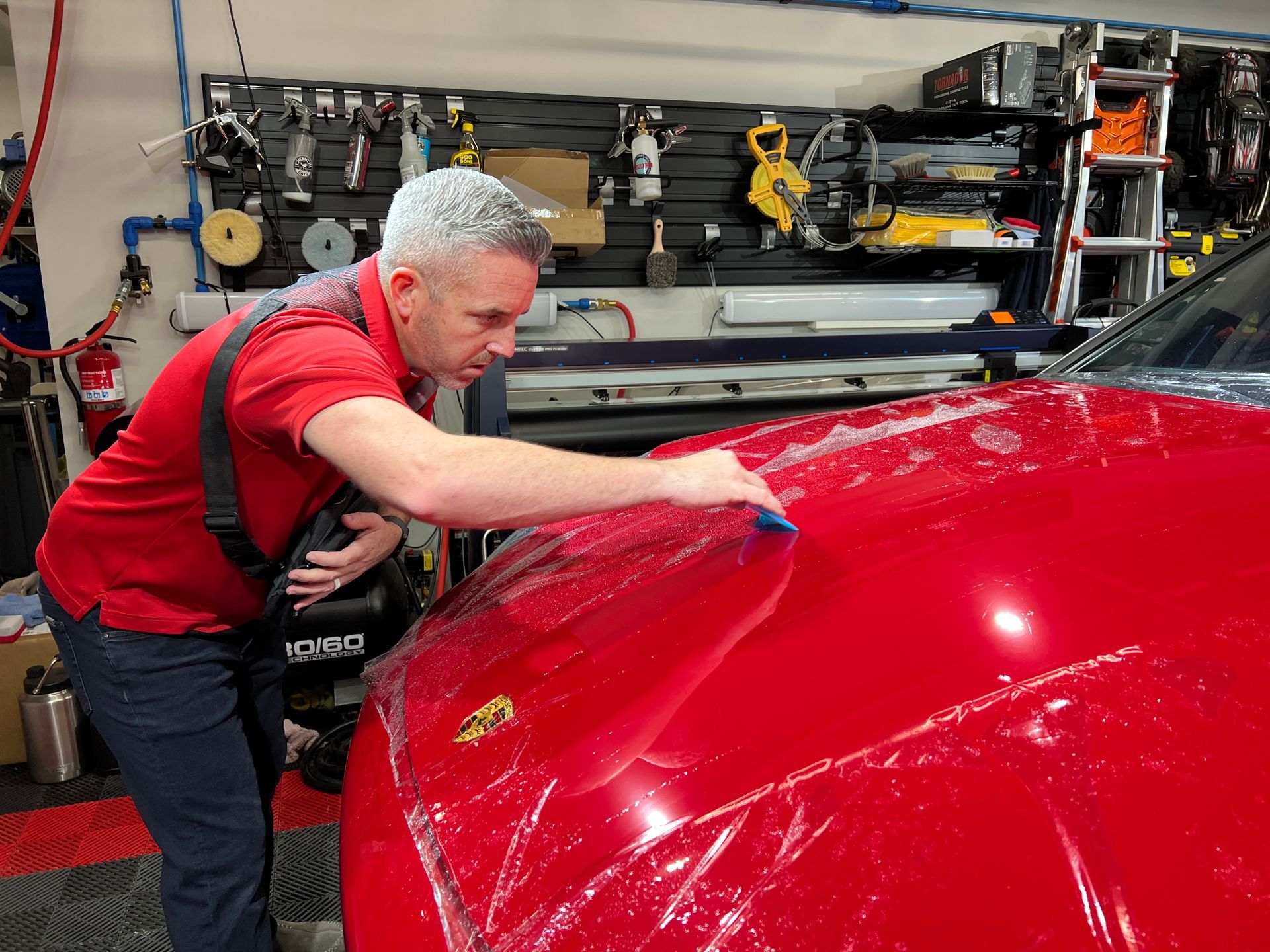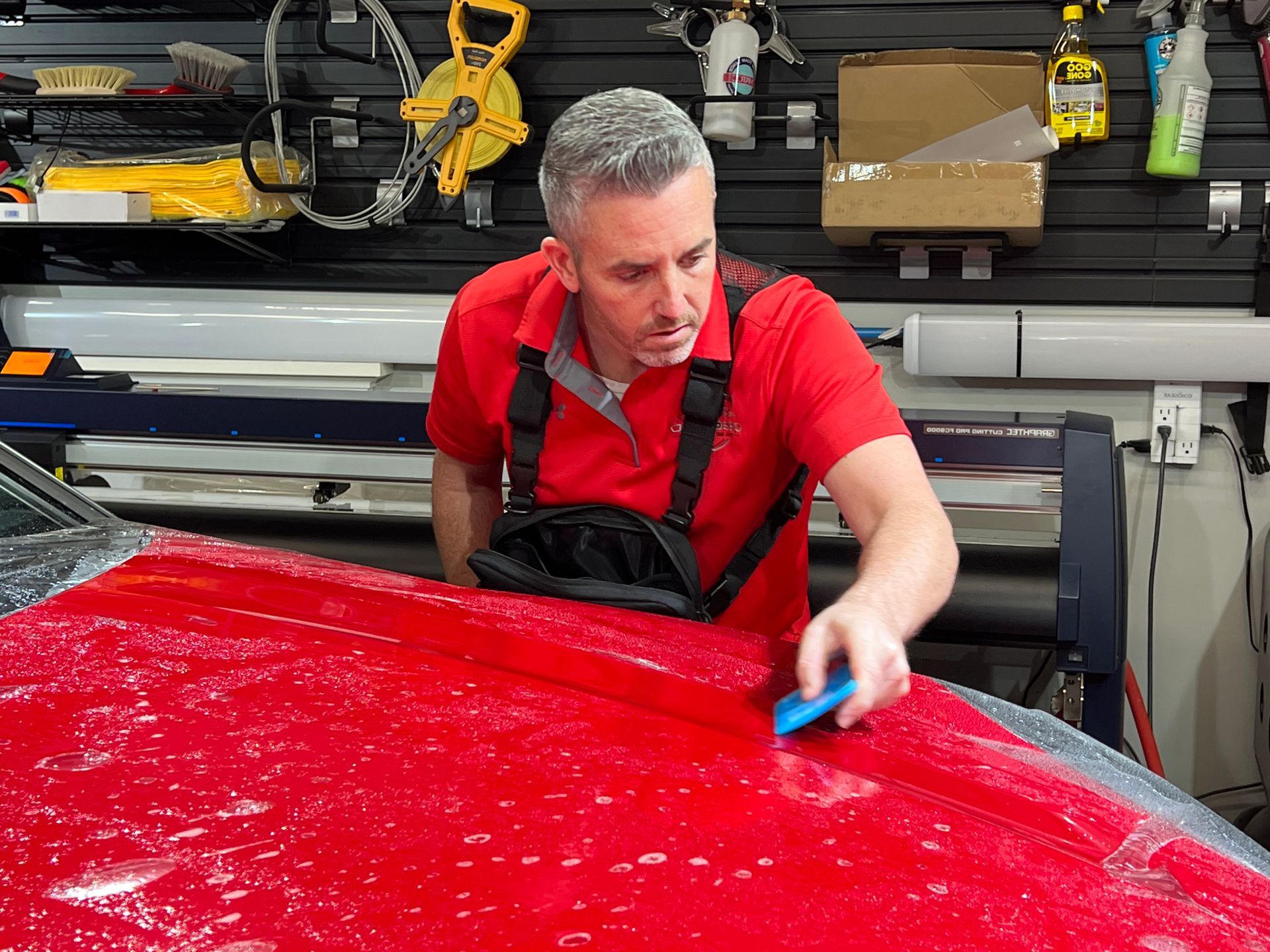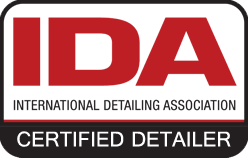
Owning a vehicle is an investment, and every car owner wants to maintain the beauty of their vehicle for as long as possible. Paint protection film (PPF) is a trusted solution that helps preserve a car’s exterior, shielding it from road debris, environmental contaminants, and exposure to harsh weather. This transparent yet highly durable layer acts as a safeguard, maintaining the original shine and factory paint while preventing premature wear.
However, like any protective measure, PPF has a lifespan. Over time, exposure to the elements and everyday driving conditions can degrade the film, reducing its effectiveness. Recognizing when your PPF needs replacement is crucial in ensuring continued protection for your vehicle.
This guide will cover the signs indicating that your PPF needs to be replaced, the factors affecting its lifespan, and practical tips to extend its durability. Finally, we’ll explore what to expect from the replacement process and why choosing a professional service is the best approach.
Signs That Your PPF Needs Replacement
While high-quality paint protection film can last several years, it won’t last indefinitely. Identifying the signs of wear early allows you to address the problem before it affects your car’s appearance and protection. Here are the most common signs that indicate it’s time for a replacement.
Discoloration
One of the most noticeable signs of PPF deterioration is discoloration. Over time, constant exposure to the sun, air pollution, and contaminants can cause the film to lose its clarity. Older PPF products, especially those without UV-resistant properties, may take on a yellowish or cloudy tint, which affects the overall look of your car. If you notice your PPF is no longer as clear as it once was, a replacement may be necessary.
Peeling Edges
When applied correctly, PPF adheres smoothly to the vehicle’s surface. However, as it ages, the adhesive can begin to weaken. Peeling usually starts along the edges and can worsen if dirt and moisture get trapped underneath. Peeling PPF not only looks unappealing but also loses its protective function.
Bubbling
Small air pockets or bubbles under the film may indicate an issue with adhesion. While minor bubbles sometimes form right after installation and settle on their own, persistent or growing bubbles suggest that the film is no longer bonding properly to the surface. This can allow moisture and debris to seep in, compromising the film’s integrity.
Reduced Hydrophobic Properties
Many modern PPF products come with hydrophobic properties, meaning they repel water and help prevent dirt buildup. If water no longer beads up on the surface as it used to and instead spreads unevenly, it may indicate that the top layer of protection has worn off.
Surface Irregularities
As PPF ages, it may develop rough or uneven patches that affect the overall smoothness of the vehicle’s surface. These irregularities can result from exposure to harsh conditions, chemicals, or excessive wear. When the film no longer feels smooth to the touch, it’s a sign that it has started to break down.
Factors That Affect PPF Lifespan
The longevity of paint protection film depends on several factors, including environmental conditions, maintenance habits, and the quality of the film used. Understanding these factors can help car owners take preventive measures to prolong the life of their PPF.
Environmental Exposure
Vehicles frequently exposed to intense sunlight, extreme temperatures, or harsh weather conditions will experience faster degradation of PPF.
- UV Rays: Constant exposure to direct sunlight can weaken the film over time, especially if it lacks UV protection.
- Road Contaminants: Salt, dirt, and pollutants can wear down the film’s protective layer.
- Humidity and Rain: Excessive moisture can cause premature adhesive failure, leading to peeling or bubbling.
Maintenance Habits
Proper maintenance plays a crucial role in determining how long PPF lasts. Poor maintenance practices can cause premature wear.
- Improper Washing: Using abrasive tools or harsh chemicals can degrade the film’s protective properties.
- Lack of Regular Cleaning: Allowing dirt and grime to build up can accelerate wear.
- Pressure Washing at High Settings: High-pressure water directed at film edges can weaken adhesion over time.
Film Quality and Installation
Not all PPF products are the same. Lower-quality films tend to degrade faster, while high-end options from reputable brands feature self-healing and UV-resistant properties that enhance durability. Proper installation is equally important—an incorrectly applied PPF may fail prematurely, requiring earlier replacement.
How to Extend the Life of Your PPF

Extending the lifespan of your paint protection film requires proper care and preventive measures. Following these expert tips can help maintain its effectiveness for as long as possible.
Wash the Vehicle Properly
- Use a pH-neutral automotive shampoo to prevent stripping away the film’s protective coating.
- Always wash the car by hand using a microfiber towel or a soft wash mitt.
- Rinse the vehicle thoroughly to remove soap residue that may cause buildup.
- Avoid using harsh chemicals, strong degreasers, or solvent-based cleaners.
Park in Shaded Areas
Reducing exposure to direct sunlight helps minimize UV damage. Parking in a garage or shaded area can slow down the aging process of PPF, preventing discoloration and breakdown.
Use PPF-Safe Cleaning Products
Not all detailing sprays and waxes are safe for PPF. Some contain chemicals that may weaken the film’s protective properties over time. Using only PPF-friendly products will help maintain clarity and hydrophobic performance.
Schedule Routine Inspections
Performing regular visual checks on your PPF allows you to spot early signs of wear and address them before they worsen. If you notice minor peeling or small imperfections, consulting a professional early on can help prevent the need for a full replacement.
The Replacement Process
When the signs of deterioration become apparent, replacing the PPF is the best way to restore your vehicle’s protection. The replacement process typically involves several steps to ensure the new film is applied correctly and seamlessly.
Professional Removal and Replacement
Certified technicians use specialized tools and techniques to remove the old PPF without causing damage to the underlying paint. The removal process usually involves heating the film to soften the adhesive before carefully peeling it off. Once removed, the vehicle’s surface is cleaned and prepped before the new film is applied. Professional PPF replacement ensures a precise fit, smooth installation, and optimal longevity.
DIY Removal Considerations
Some vehicle owners attempt to remove and replace PPF themselves. While this can be done with patience and the right tools, DIY removal carries risks such as leaving adhesive residue or damaging the paint if done incorrectly.
Unless you have experience with the PPF application, professional installation is recommended for the best results.
Why Choose Obsessed Detail and Restoration?
If your PPF shows signs of aging, replacing it promptly ensures that your vehicle remains protected and looks its best. Selecting a reliable expert for this task is crucial.
Obsessed Detail and Restoration specializes in high-quality paint protection film installation and replacement. Our skilled technicians use advanced techniques and premium PPF products designed for maximum durability and clarity.
With a commitment to precision, customer satisfaction, and long-lasting results, we take pride in protecting your vehicle with the best solutions available. Whether you need a full PPF replacement or a partial reapplication, we ensure a flawless finish that enhances the longevity of your car’s paint.
Book a consultation today with Obsessed Detail and Restoration and give your vehicle the protection it deserves.


